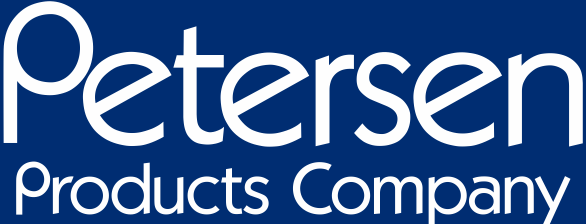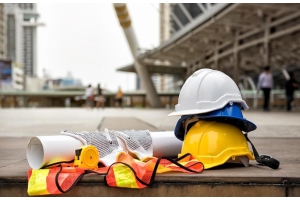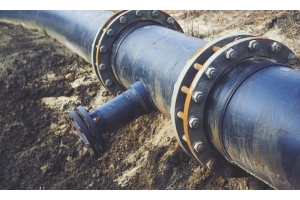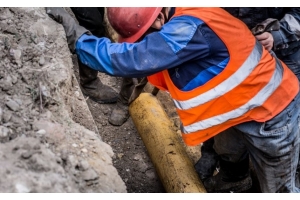How to Purge Water Pipes in a Commercial Setting: Best Practices & Tools


Maintaining clear and efficient water pipes is essential in commercial settings, where purging water lines regularly helps prevent issues like air pockets and sediment buildup, which can lead to low water pressure and even system failure.
Why Pipe Purging is Essential for Commercial and Industrial Water Systems?
Pipe purging is crucial for ensuring the efficiency and lifespan of commercial and industrial water systems. One of its key advantages is that it prevents air blockages, which can create pressure imbalances and damage to equipment. Air trapped in water pipes disturbs flow, causing noise and irregular water pressure, and can eventually ruin valves, pumps, and other components.
Additionally, purging helps in the removal of dirt and impurities such as rust, scale, and sediment that can accumulate in pipes. These materials can clog equipment, foul heat exchangers, and cause operational inefficiencies. The removal of such debris helps the system run smoothly and reduces the risk of corrosion and contamination.
When physical cleaning (such as pigging) is challenging for large pipe networks or time is limited, purging with a flush fluid or air is frequently the preferred method. While purging may not remove every bit of material, it does efficiently eliminate debris that may become free during normal operation.
4 Signs Your Commercial Water Pipes Need Purging
Identifying the signs that your industrial water pipes need to be purged is important for keeping the system running smoothly and consistently. Some common signs are:
-
Decreased Water Pressure
If your water pressure is lower than usual or fluctuates, it could be due to air blockages or debris buildup in the pipes. These clogs can reduce water flow, making it harder for the system to function properly. -
Unusual Noises
Sounds such as banging, gurgling, or hissing from the pipes are frequently caused by trapped air. These noises suggest the need for commercial pipe purging to restore correct flow and avoid pressure problems. -
Rusty or Discoloured Water
If the water flowing from your taps is rusty or discoloured, it may indicate corrosion or sediment accumulation in the pipes. Over time, this can lead to contamination and potential health problems, therefore pipe purging is critical for maintaining water quality. -
Sediment Buildup
The accumulation of particles like rust, scale, and other components can cause clogs in your water system. Regular industrial water pipe maintenance, including purging, helps to flush out these contaminants and maintain a clean, efficient system.
Addressing these warning signs early on with pipe purging can help prevent more serious system failures and keep your water system working smoothly.
Step-by-Step Guide to Purging Water Pipes in a Commercial Setting
Properly purging water lines in a commercial setting is essential for peak performance and longevity of the water system.
-
Turn Off The Water Supply
Turn off the main water supply to provide a controlled atmosphere for purging. This stage prevents unintentional water flow during the procedure, which could cause problems. -
Open Faucets And Valves
Open all faucets, valves, and outlets to relieve pressure and help remove trapped air and debris. This also ensures that any trapped contaminants are removed from the system. -
Prepare The Pipe Purging Equipment And Start The Process
Prepare your pipe purging equipment, such as drain flushers or air compressors. Begin purging the pipes to remove any blockages or air pockets. Before you begin, make sure all of the equipment is properly connected and operational. -
Monitor, Release Air Pockets, And Inspect
Keep an eye on the system when purging. Use air release valves to remove any trapped air, and then inspect the system for any remaining debris or obstructions. Regular monitoring ensures that the process is efficient and prevents pressure imbalances. -
Restore Water Supply And Test The System
Slowly turn on the main water supply, allowing the system to pressurize. Run water through the system to ensure consistent pressure and smooth flow. Check that all faucets and valves are working properly, and that there are no leaks or unusual noises.
By following these methods, you may efficiently purge your water pipes, ensuring they are clear of obstacles and ready for peak performance.
Best Tools for Purging Water Pipes
Effective pipe purging is critical to the efficiency and lifespan of commercial water systems. Using the proper tools promotes thorough cleaning and avoids potential problems. Here are some crucial tools that can help streamline the purging process and keep your water pipes in excellent condition:
-
Drain Flushers
Drain flushers use high-pressure water to effectively remove sediment and debris from pipes, keeping your system clean and efficient. -
Hydrostatic Test Pumps
Hydrostatic test pumps are critical for applying pressure to the water system, flushing impurities, and detecting leaks, so assuring the system's integrity and best operation. -
Air compressors
Air compressors help by forcing air through pipes to release trapped air and remove blockages, which is critical for making sure smooth water flow and avoiding disruptions. -
Inflatable Pipe Plugs
Inflatable pipe plugs are used to block off specific pipe sections, allowing for focused purging while preventing material from spreading to other portions of the system, increasing the effectiveness of the purge process.
4 Best Practices for Purging Water Pipes in Commercial Settings
It is critical to follow recommended standards when purging commercial pipes to ensure efficiency and effectiveness. Here are some important guidelines to follow:
-
Schedule Regular Pipe Purging
Incorporate the regular purging of water lines into your preventative maintenance routine to avoid sediment and air buildup. Regular purging prevents the buildup of sediment and air blockages, which can cause system inefficiencies and damage. Setting up a consistent purging routine can help you maintain optimal water flow and system performance over time. -
Ensure Proper Isolation Of Pipe Sections
When purging, make sure that you properly isolate the sections of the pipe you're working on. This helps to concentrate the purging process on certain locations without impacting the entire system. Proper isolation keeps possible faults from propagating throughout the network, -
Use Certified Tools And Equipment
Use high-quality, certified tools and equipment for your purging efforts. Drain Flushers, Hydrostatic Test Pumps, and Air Compressors built exclusively for pipe purging provide efficiency and safety. Certified pipe purging equipment is tested for reliability and performance, helping in achieving the best results. -
Monitor Water Pressure And Quality
After completing the purging process, closely monitor the water pressure and quality. Check for any signs of progress or persistent issues. Regularly checking these factors ensures that the purging process was successful and that the water system is running smoothly.
Conclusion
Regular pipe maintenance, including proper purging, is critical to the smooth operation and lifespan of commercial water systems. By including routine purging in your maintenance schedule, you can avoid typical problems like air blockages, silt buildup, and pressure imbalances. Proper purging not only guarantees maximum water flow and system efficiency, but it also reduces the requirement for costly repairs and extends the life of your infrastructure.
To maintain a reliable and efficient water system, follow best practices, use certified tools, and assess system performance after each purging session. Investing time and resources into good pipe purging will pay off by maintaining a reliable and efficient water system.
Disclaimer: Use any product or process in accordance with all applicable laws, including federal, state, and local regulations, and with manufacturer-specified instructions.






